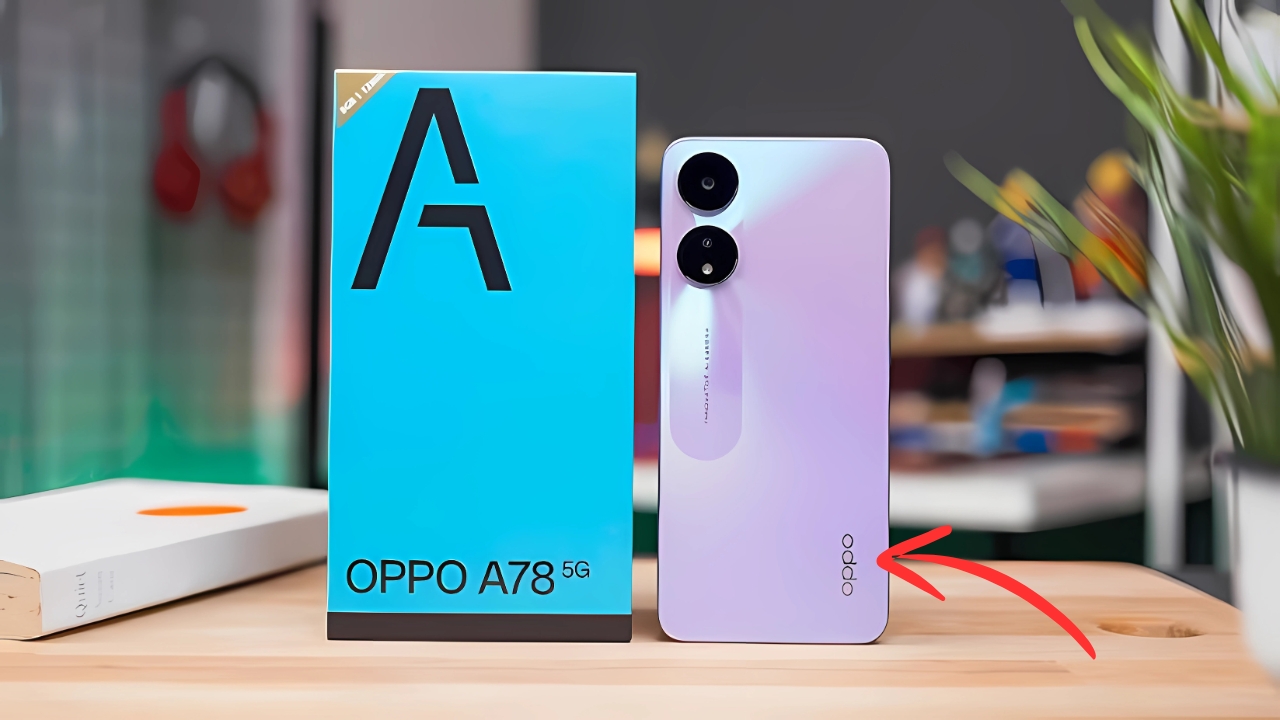Oppo A78 5G: The democratization of smartphone technology has accelerated dramatically in recent years, with features once exclusive to premium devices steadily filtering down to more accessible price points.
The Oppo A78 5G exemplifies this trend, attempting to deliver a balanced experience that prioritizes everyday usability over specification extremes.
After using this device as my daily driver for several weeks, I’ve developed a nuanced understanding of where it succeeds and where compromises become apparent.
Oppo A78 5G: Market Context: Understanding the A78’s Position
To properly evaluate the A78 5G, one must first understand its positioning within both Oppo’s lineup and the broader smartphone ecosystem.
Situated in the increasingly competitive budget 5G segment (approximately ₹18,999/$230), this device targets price-conscious consumers seeking modern connectivity without sacrificing core smartphone experiences.
This positioning places the A78 5G in direct competition with offerings from Xiaomi’s Redmi series, Samsung’s A-series, and various domestic brands depending on region.
Oppo’s approach differentiates somewhat through attention to design refinement and interface polish rather than engaging in specification battles that often characterize this segment.
Design Execution: Thoughtful Touches
The A78 5G makes a positive first impression through design elements that elevate it beyond typical budget aesthetics. The “Glowing Black” variant I tested features a subtle shimmer effect that shifts under different lighting conditions without appearing excessively flashy.
This finish effectively masks fingerprints – a practical consideration often overlooked in glossy-backed competitors.
At 8.16mm thick and weighing 188 grams, the device strikes a comfortable balance between substantiality and manageable heft.
The frame, while plastic, incorporates a metallic finish that convincingly mimics aluminum until closely inspected.
This attention to perceived quality extends to the power button, which doubles as a fingerprint sensor with satisfying tactile feedback and reliable recognition.
The front design embraces contemporary aesthetics with a punch-hole camera and reasonably slim bezels, though the slightly more pronounced chin serves as a reminder of the device’s budget positioning.
The flat display with gently rounded corners enhances usability, particularly when typing near screen edges – an ergonomic consideration sometimes overlooked in curved implementations.
Perhaps most impressive is the IP54 dust and splash resistance – a feature rarely found at this price point. While not offering full waterproofing, this rating provides meaningful protection against everyday incidents like light rain or kitchen splashes, enhancing the device’s practicality for typical users.
Display Experience: Balanced Compromises
The 6.56-inch LCD panel represents one of the device’s more obvious compromises compared to AMOLED-equipped competitors, yet implementation quality matters more than technology alone.
Oppo has selected a capable LCD that delivers good color reproduction, acceptable viewing angles, and better black levels than many competing IPS implementations.
The 90Hz refresh rate provides smoother scrolling and interface navigation than standard 60Hz displays, enhancing the perception of system responsiveness.
Maximum brightness reaches approximately 600 nits in high brightness mode, sufficient for outdoor visibility except in direct sunlight.
The 1612 × 720 resolution (HD+) reveals another budget-conscious decision, resulting in approximately 269 pixels per inch – adequate for typical viewing distances but revealing softness upon closer inspection, particularly with text and icons.
Color accuracy in “Gentle” mode exceeds expectations for this category, while the “Vivid” setting boosts saturation to partially compensate for LCD’s inherent limitations compared to OLED technology.
The inclusion of Widevine L1 certification enables HD streaming across supported services – a small but meaningful detail sometimes missing from budget devices.
Performance Dynamics: Everyday Reliability
Powered by MediaTek’s Dimensity 700, the A78 5G utilizes a proven chipset that balances efficiency with adequate performance for mainstream tasks.
The 8GB/128GB configuration in my review unit provided comfortable multitasking headroom for typical usage patterns, with LPDDR4X RAM and UFS 2.2 storage offering reasonable data access speeds.
In practical terms, the device handles messaging, social media, video consumption, and light productivity without hesitation.
Apps launch with minimal delay, system navigation maintains fluidity thanks to the 90Hz display, and switching between recent applications occurs without significant reloading when staying within reasonable multitasking boundaries.
Gaming capabilities reflect the device’s budget positioning but exceed what some might expect. Titles like “Mobile Legends” and “Call of Duty Mobile” run smoothly at medium settings, though more demanding games require further graphical compromises to maintain playable frame rates.
Heat management impresses during extended sessions, with only moderate warming even during sustained workloads – suggesting effective thermal design despite cost constraints.
The inclusion of 5G connectivity provides future-proofing without significantly impacting the device’s price positioning.
During testing in areas with 5G coverage, network performance proved stable with expected speed improvements over LTE, though the real-world advantage remains moderate in most current usage scenarios.
Camera System: Practical Approach
The camera array combines a 50MP primary sensor with a 2MP depth sensor, foregoing the ultrawide and macro lenses often included in competitors primarily for marketing purposes.
This focused approach proves wiser than implementing lower-quality supplementary cameras, allowing development resources to concentrate on optimizing the main shooting experience.
In favorable lighting, the primary camera captures detailed images with natural color reproduction that avoids the excessive processing found in some competitors.
Dynamic range proves adequate for most scenes, though challenging lighting can occasionally produce blown highlights or crushed shadows.
The inclusion of AI scene recognition generally improves results, particularly for landscapes and food photography.
Low-light performance reveals expected limitations, with noticeable noise and detail loss in challenging conditions.
The night mode improves matters considerably, producing usable images through computational photography that balances noise reduction with detail preservation – though results fall predictably short of devices costing several times more.
The 8MP front-facing camera delivers detailed selfies in good lighting, with portrait mode creating convincing background blur despite relying primarily on software algorithms rather than dedicated depth sensors.
Video capabilities include stable 1080p recording at 30fps, with electronic image stabilization that produces acceptable results during moderate movement.
Rather than attempting to match higher-priced devices across all photography scenarios, Oppo has focused on delivering consistent, reliable performance in common shooting situations – a sensible approach that aligns with likely usage patterns in this segment.
Battery Experience: Enduring Power
The 5,000mAh battery represents one of the device’s clearest strengths, consistently delivering full-day endurance even under heavy usage patterns.
More conservative users could potentially extend this to two days, providing flexibility during travel or other situations where charging opportunities may be limited.
The included 33W SuperVOOC charger represents another area where the A78 5G exceeds typical budget expectations.
A full charge requires approximately 70 minutes, while even a 30-minute connection provides significant capacity for extended use.
This charging capability enhances the overall experience by reducing the time investment required for battery maintenance.
Battery health features demonstrate attention to longevity, with optimized night charging that learns usage patterns and adjusts the final charging phase to reduce battery stress.
This consideration for extended device life aligns well with the value-conscious positioning, recognizing that many purchasers in this segment plan to keep their devices for multiple years.
Software Experience: Refined Interface
ColorOS 13.1, based on Android 13, represents another area where the A78 5G differentiates from some budget competitors.
The interface offers extensive personalization options without overwhelming complexity, while animations appear fluid thanks to the 90Hz display and adequate processing power.
The settings menu organization demonstrates logical consideration, making specific options easier to locate than in some competing interfaces.
Bloatware remains relatively restrained compared to some alternatives in this price bracket, with most pre-installed applications serving clear utility purposes.
The remaining third-party applications can be uninstalled rather than merely disabled – a consumer-friendly approach that respects user preferences and device storage.
Oppo’s commitment to two years of OS updates and three years of security patches exceeds many budget alternatives, enhancing the device’s longevity and value proposition.
This support window addresses a historical pain point in the budget segment, where software abandonment often occurred much earlier in the ownership cycle.
Oppo A78 5G:
The Oppo A78 5G ultimately succeeds through clear understanding of its target audience and judicious feature prioritization.
Rather than attempting to excel across all specifications or match higher-priced alternatives, it delivers a balanced experience that emphasizes battery life, charging speed, design refinement, and software polish – elements that impact satisfaction throughout the ownership cycle.
For consumers operating within budget constraints, the A78 5G offers a compelling proposition that focuses on practical advantages while incorporating thoughtful touches that enhance perceived value.
In eschewing gimmicky features of questionable utility in favor of everyday usability, Oppo has created a device that satisfies essential smartphone needs while providing meaningful improvements in areas that genuinely impact the user experience.
In an increasingly homogenized budget segment where specification comparisons often dominate purchasing decisions, the A78 5G makes a convincing case for the importance of balance and refinement over isolated hardware extremes – a philosophy that should resonate with pragmatic consumers seeking maximum real-world utility from their technology investments
Also read this –










